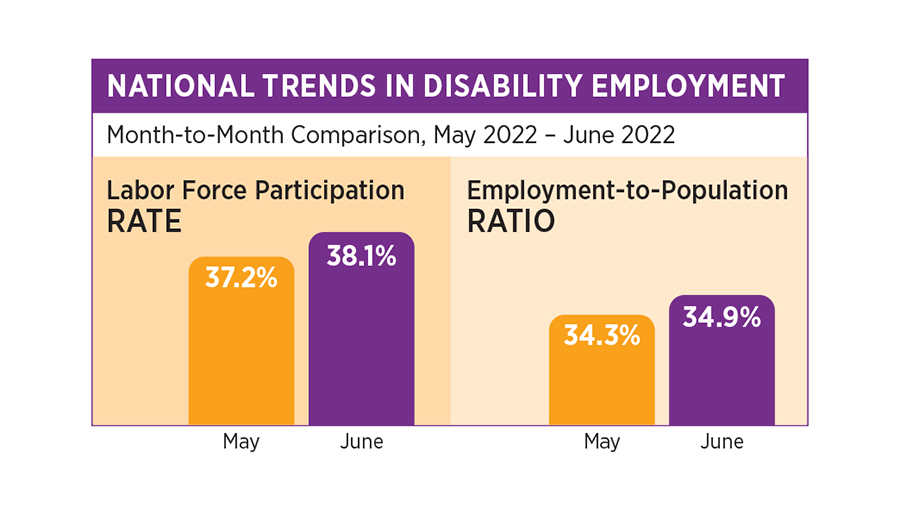
The US Department of Labor’s official theme for Disability Employment Awareness Month 2022 (October 1-31) is “Part of the Equity Equation.” This slogan reflects the standard definition of low disability employment as primarily a diversity/equity/inclusion issue.
But a new paper in the medical journal Disability and Rehabilitation examines the question through a health-outcomes lens. Focused on lower-limb amputees who have lost legs due to dysvascular disease (including diabetes), the paper finds a strong correlation between workforce participation and functional mobility.
The explanation for that result might seem obvious: Healthier, more ambulatory amputees face fewer barriers to employment than less mobile individuals. But the authors argue that cause and effect might run in both directions, and that having—or finding—a job can exert a positive impact on an amputee’s mobility.
The key evidence for that conclusion is that employment status is a stronger predictor of mobility than either age or amputation level. The authors theorize that work promotes self-efficacy, or the individual’s confidence that he or she can overcome challenges and achieve goals—including adapting successfully to a prosthesis. Accordingly, the researchers suggest, “a patient’s work status can help guide expectations and clinical decision-making and may indicate the need for referral to employment-related resources or vocational rehabilitation…. Practitioners should include an assessment of personal and socioenvironmental factors related to employment when considering potential barriers and facilitators to optimal prosthetic rehabilitation.”
In plain English: Returning to work at any age can help a lower-limb amputee get back on his or her feet. All the more reason to advocate for inclusive hiring practices this October.
Disability Employment Hits New High
Employment for people with disabilities reached an all-time high this summer, according to the nation’s leading tracker of disability workforce trends.
The National Trends in Disability Employment (nTIDE) tracking report for June 2022 registered an employment-to-population ratio of 34.9 percent for people with disabilities. That’s the highest figure ever recorded in nTIDE’s nine-year history, and it represents a 10.8 percent increase over June 2021. A related statistic, the labor force participation rate, increased to 38.1 percent for people with disabilities.

“Employment and labor force participation of people with disabilities now exceeds pre-pandemic levels,” says Andrew Houtenville, research director of the University of New Hampshire’s Institute on Disability, which co-sponsors the nTIDE report. The figures continue a pattern that has persisted throughout the post-pandemic economic recovery, Houtenville adds, and they may be intensifying due to recent inflationary pressures. “The increase in labor force participation rate of people with disabilities may reflect the need for individuals and families to pick up extra income due to rising prices,” he says.
Ironically, the unemployment rate for people with disabilities also ticked upward slightly, but Houtenville writes that off as a blip in the data. Unemployment rates are based on the number of people looking for work, he points out. As more people enter the labor market in search of jobs, it can cause a temporary spike in the rate of unemployment.
nTIDE estimates the total number of people with disabilities in the workforce at 5.8 million, or almost 4 percent of the overall US workforce.




